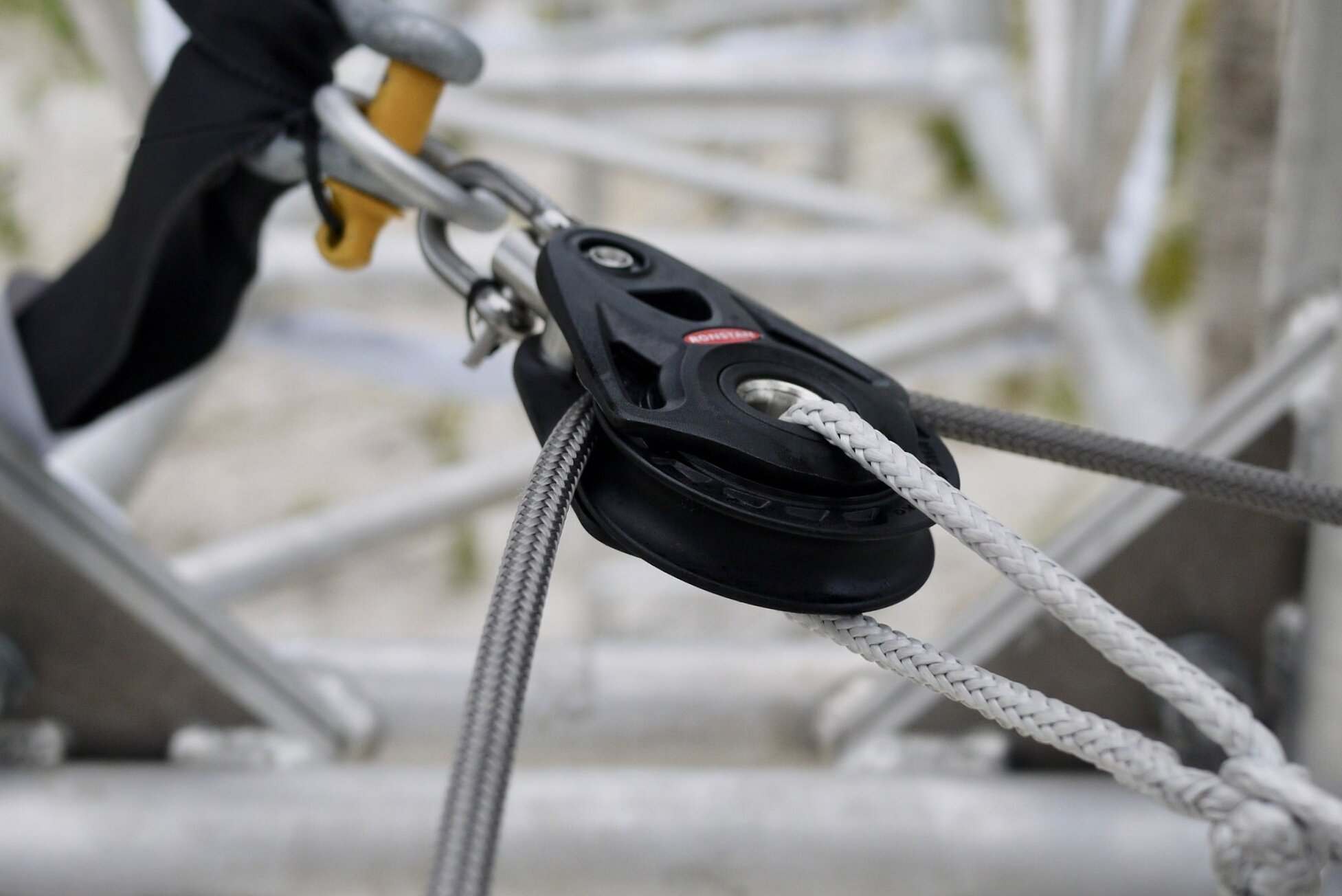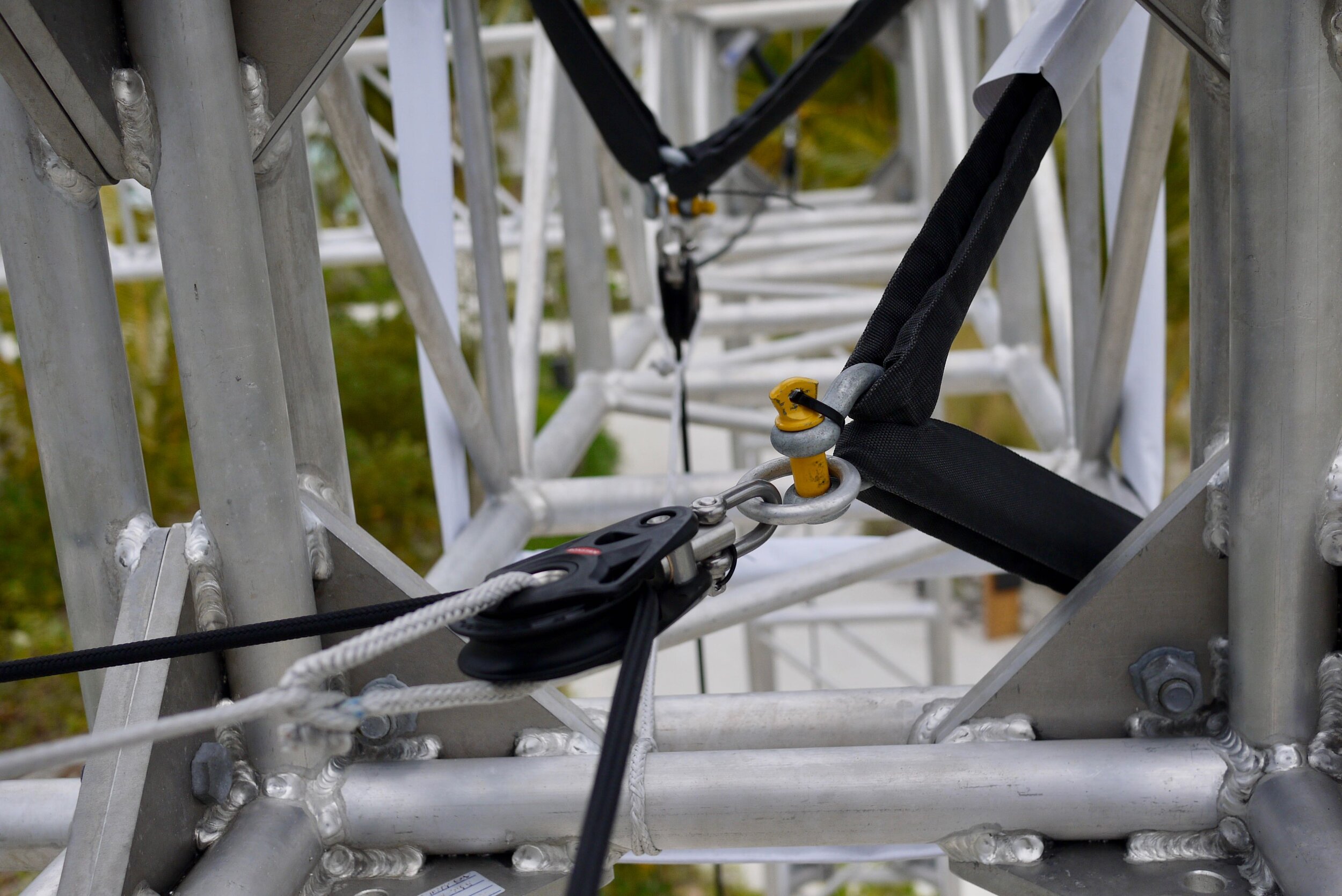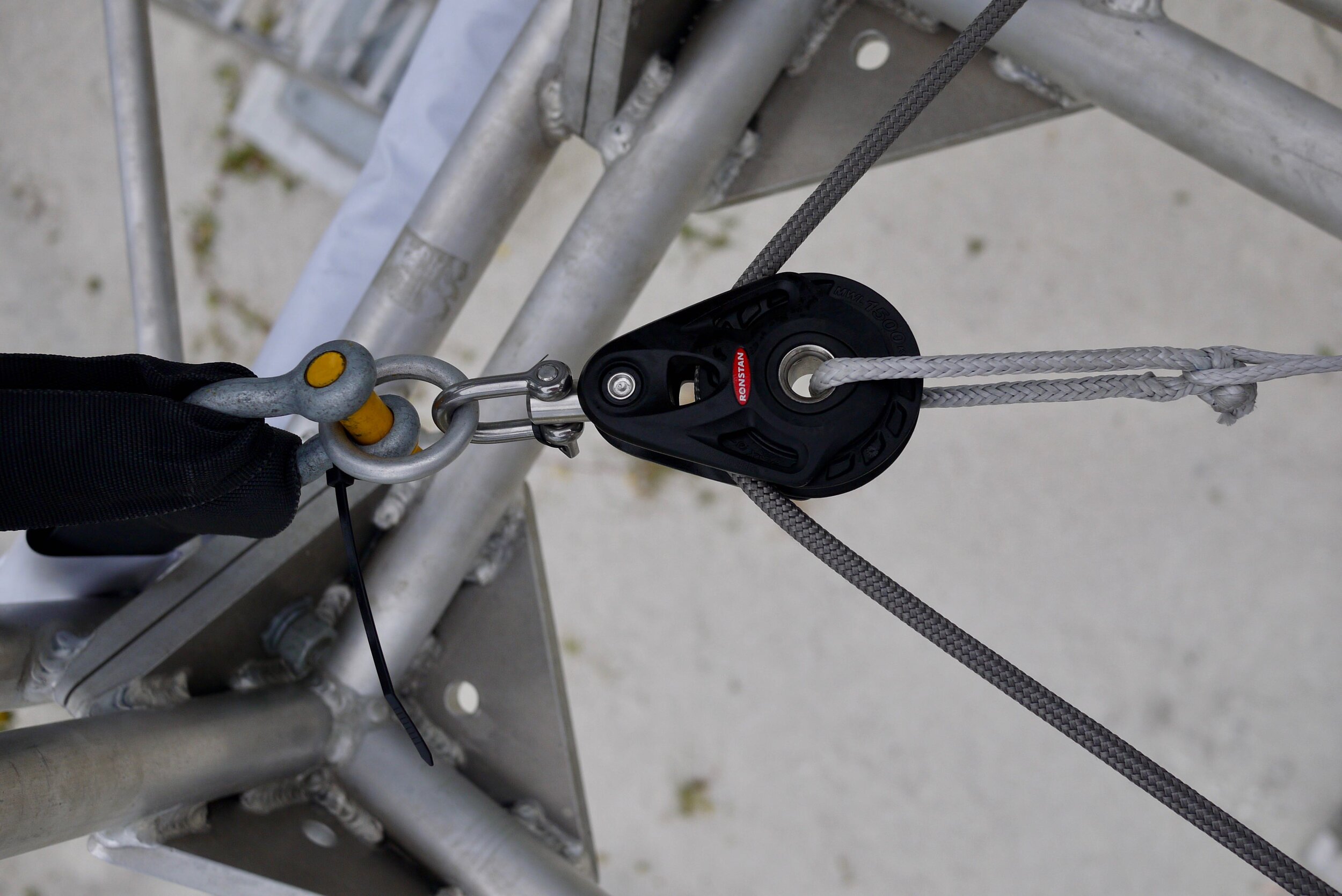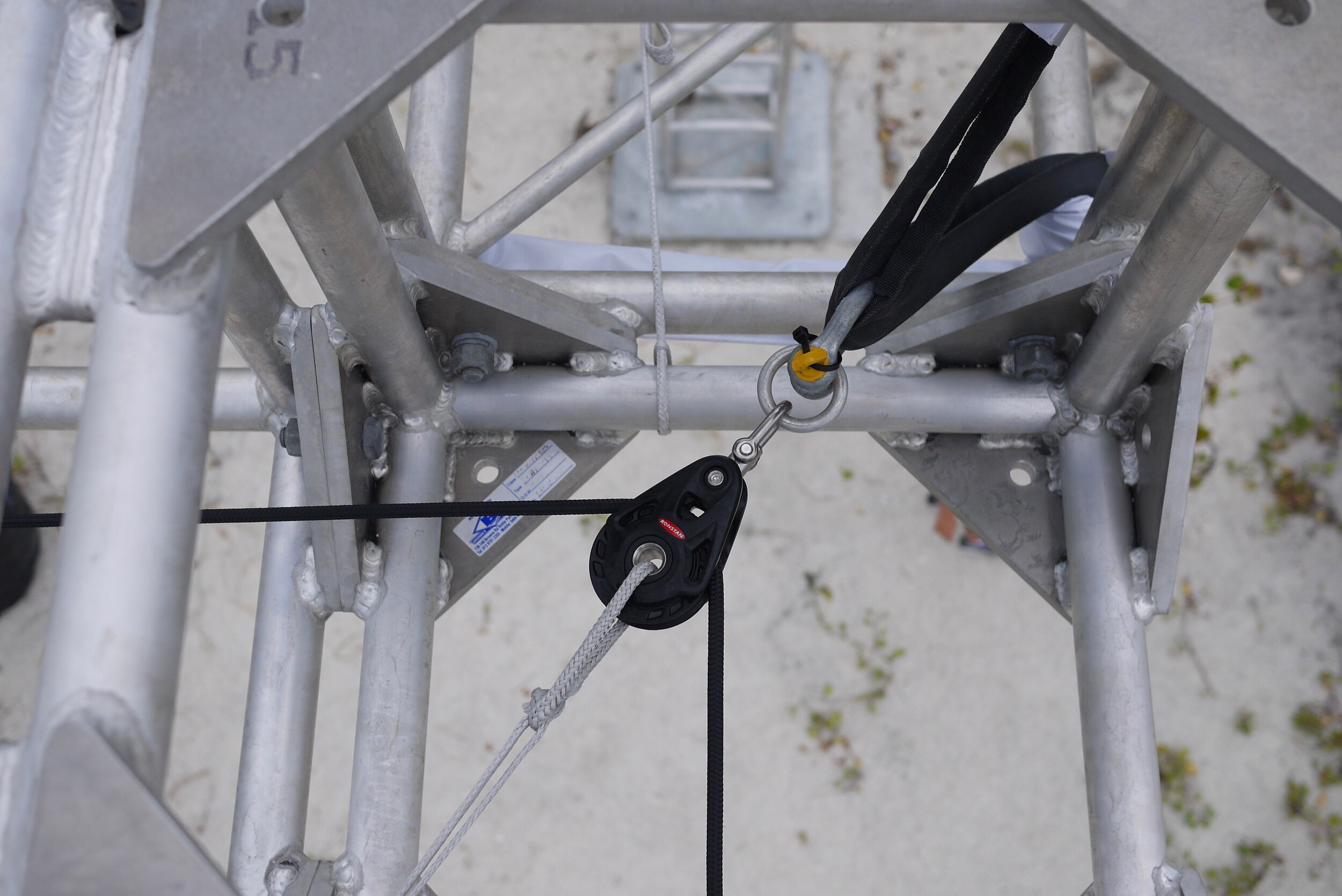High Performance Aerial Rigging
Gavin Smith
For this case study, we continue our discussion of acceptable wear limits and take a close look at some recent studio designs and talk about the use of high-performance rigging equipment and techniques for aerial rigging.
When we design rigging systems for clients, it’s always a compromise between cost, performance and ease of use. We never compromise when it comes to safety! For that reason, we select equipment that performs well in this dynamic and extremely complex environment.
. As an example, in the last case study, we spoke about the acceptable risk of rigging gear that has an element of wear that is acceptable to a point and at what point is that acceptable? Well, that's a highly complex question to answer and relative to each installation and application. But it's critical that at no point in time is the equipment ever exposed to loads and forces that exceed the designed capacity.
For our example, in this case, study, we'll focus on our recent aerial rigging design and installation at the Hard Rock Hotel in the Maldives.
For the hardware selection, we used the Ronstan Series 75 single sheave pulley for all diversions and points. These have a Break Load (BL) of 3000kg and by applying a 10:1 safety factor for flying people, this will give us a 300kg Safe Work Load (SWL). The rigging also has to endure the salt air environment and damaging effects of UV so it made perfect sense to use this hardware in this application, even though it's primary use is for marine rigging.
The other features of this pulley include a hollow core, swivelling and locking head and stainless steel hardware. We connected this pulley via a drop forged alloy 4140 steel "O" Ring proof load tested to 33.3 kN and a 3.25-tonne bow shackle and finally to a 2-tonne synthetic fibre round sling in a basket configuration.
To further breakdown this calculation, and selection process, we can determine the Break Load (BL) values of each item and then apply the safety factor of 10:1; it simplifies the calculations. It draws our attention to any under-rated gear. We can then consider the identified weakest link asses it as an acceptable risk, or improve the design to mitigate that risk.
As you can see in the example above, there are many parts to a rigging system, and the safe and correct selection of gear is not an easy task. Many manufactures list and apply varying ratios of safety and list only the SWL (Safe Work Load) or WLL (Work Load Limit) and rarely, the UDL (Ultimate Destruction Load).
We hope this helps you in your understanding of the levels that a professional rigger will go to provide the highest level of safety.
Next, we take a look at the rigging software ropes, adjustable slings and soft shackles used in this system and how they allowed us to design a sophisticated, high-performance rigging system.




